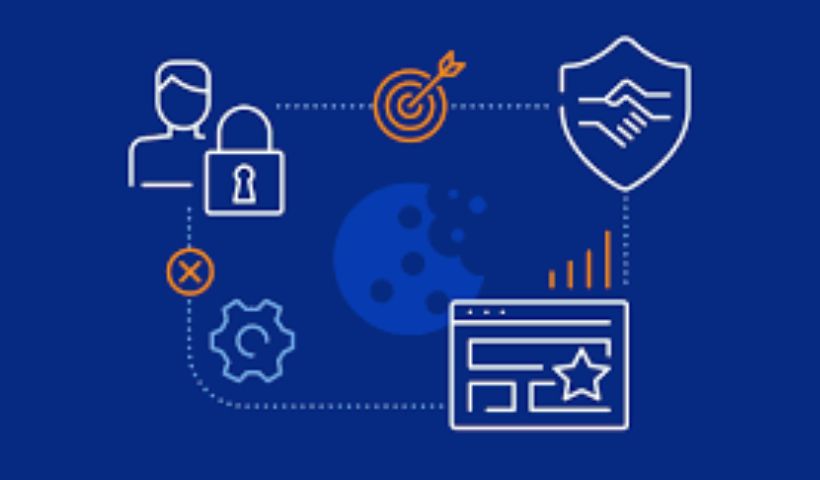Future Of Cookies: The phrase “Cookieless Future” describes websites that utilize cookies sparingly. While not always the case, this is especially true for third-party cookies.
In case you are unfamiliar with cookies, this page provides a concise explanation.
Cookies are small files that are stored on the user’s computer when they browse a website. They are only used (with consent) to store information such as the user’s login details or browsing history so that the website can provide the user with a more personalized user experience. There are more than two types of cookies, but for convenience, today we are going to talk about the two most common. First-party cookies are those placed by the website operator; third-party cookies are those placed by other businesses (such as advertisements).
The Role Of Cookies In Online Advertising
Cookies play an important role in the world of digital advertising, as they provide advertisers with a large amount of important data that they use to offer users more relevant and effective advertising.
However, this raised some criticism and questions regarding privacy. Critics argue that these cookies encourage “surveillance capitalism,” which seeks to collect user data for profit. Because, in most cases, users are tracked without their knowledge or consent.
For this reason, Google has announced that it will stop using third-party cookies from 2024. The company would look for new technologies and approaches that can help protect user privacy while allowing advertisers to serve relevant ads. Google is now working on a number of data security initiatives under the moniker “Privacy Sandbox” as a result. This sandbox uses technologies such as machine learning to classify people into larger anonymous categories based on their interests. This allows advertisers to continue showing users ads relevant to their interests while maintaining user anonymity.
The next step is more technical in nature; if you want, you can skip it and go directly to how should website owners and marketers approach this situation?
So How Does Privacy Sandbox Work?
- Federated Learning of Cohorts (FLoC): Instead of using cookies to track user behavior, Privacy Sandbox uses FLoC. It is a new system that divides users into groups with similar interests. Advertisers can then target these groups rather than individuals.
- TURTLEDOVE: TURTLEDOVE (Two uncorrelated requests, then win decision executed locally) allows websites to display personalized ads without tracking user behavior on the web. In this case, the browser makes advertising decisions locally and user data remains private.
- Own Sets: Own sets form a network of websites so that they can exchange data with each other. This collaboration helps all stakeholders deliver personalized content and advertising while protecting user privacy.
- Trust Tokens: With trust tokens, browsers can prove to a website that the user is “real” without having to transmit their identity. This prevents bots or other automated systems from manipulating the system.
What This Means For Website Owners
Will consent disappear then? A clear no! You will still need to obtain explicit consent from your users as long as privacy rules are in place.
But you may have to adapt to new technologies. Once Chrome removes third-party cookies, website owners will have to find new ways to reach their audience and measure the success of their advertising. This may mean using new tracking technologies or finding new approaches to online advertising.
How Should Website Operators And Marketers Deal With This Situation?
Here are some steps website owners can take to prepare for a cookieless future:
- Create quality, relevant content: As contextual targeting becomes increasingly common, make sure your content is well-tailored to your audience. Contextual targeting is a strategy where Google analyzes the content of a website and serves ads based on the content of the page.
- Implement alternative tracking methods: Google, for example, is working on a new technology called Federated Learning of Cohorts (FLoC), which groups users with similar browsing behavior into cohorts for ad targeting.
- Understanding first-party data: Collect and use first-party data, such as through newsletter subscriptions, user accounts, and social media activity.
- Use a consent management platform: While third-party cookies will soon be a thing of the past, privacy regulations such as the GDPR and CPRA still require user consent through first-party cookies before their personal information is collected.
A CMP can help your website manage its cookies and comply with this privacy policy even when you use alternative tracking methods. A CMP is required, especially if you are prioritizing your first-party data.
- Build trust: Not only should you show your users that you comply with the latest data protection regulations, but also that you make their privacy a priority by giving them more control over their personal data. For this reason it is important that you provide a clear and unambiguous declaration of consent and information on how you will process your personal data.
In a cookieless future, a flexible and powerful CMP will be an important tool for managing user consent and collecting data. Try consentmanager CMP now for free.
Get Ready Now
It is possible that Google will not make a decision until next year on the possible elimination of third-party cookies. However, website operators and marketers can start preparing now.
Take the initiative now! Make sure you are compliant and ready when the new changes take effect. Regarding recent and impending global legislation developments, our CMP is constantly informed. Check your website’s GDPR compliance for free.
Also read : B2B Marketing

